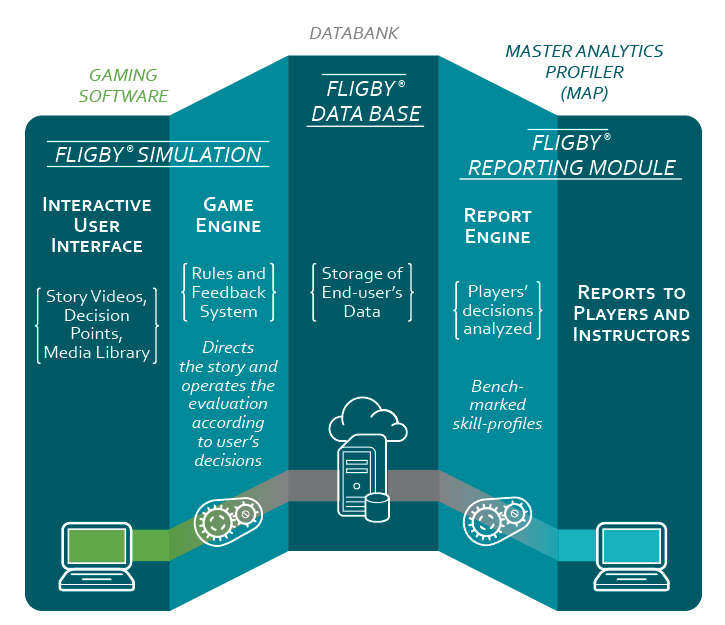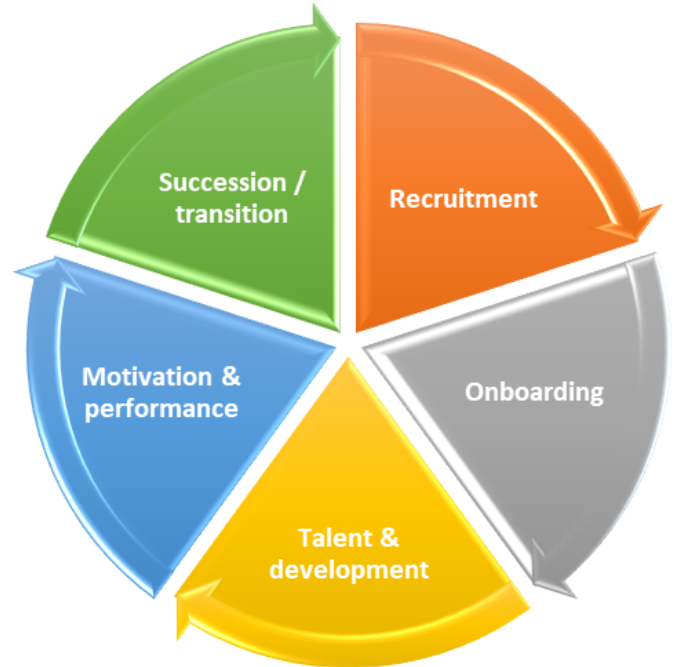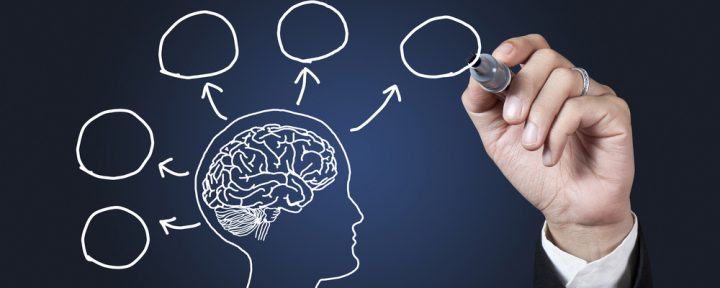Psychometrics: what do we do with them anyway?
In my last blog post, I discussed how we can test improvement over time in crucial leadership skills, including how we can overcome some of the biases that come along with performance ratings. This was in the context of one of the most useful functions of the FLIGBY game – the competency report produced by FLIGBY’s Master-Analytics Profiler upon completion.

One of the common conversations I have with HR practitioners around the use of such psychometric tools is around how we can put them to use in business and how we elevate the use of these valuable tools above ‘one-trick pony’ status. I, therefore, wanted to share an example from my own experience, which will hopefully serve up a little inspiration.
Embedding psychometrics into the employee lifecycle
Several years ago I worked for an organization that had previously invested a lot of money in a particular psychometric tool where each staff member had a personality profile completed upon recruitment. This meant there was a lot of data sitting in the background, which could be used to compare preferences at the team, division and organization-wide levels. While drafting the organization’s Learning and Talent Development Strategy, I included an approach to embed the psychometric tool into several steps of the employee life cycle.
“…the employee lifecycle offers a framework that allows us, in principle, to evaluate investments in the attraction, recruitment, performance, development, and retention of our workforce.”
CIPD

Recruitment
Many will be familiar with the process of completing psychometric tests measuring our cognitive abilities or personality preferences as part of recruitment processes. Often this is used to establish a base level of competence and where this is used well, it gives potential indications of fit with the rest of the team. There are however deeper potential uses for the results of candidates’ psychometric reports. For example, when candidates are given time to reflect on their results before the interview, interview questions can be tailored towards discussing candidates’ relative strengths and development areas, as well as shedding light on their personal values and when they are likely to escalate for support.
The reflective potential doesn’t just end there though. Alongside unconscious bias training, reports from psychometric tools can be used as a refresher for interviewers to explore their own biases before interviewing candidates. This is particularly useful for interviewers who participate in large volumes of recruitment and can serve as a helpful anchor back when suffering interview fatigue.
With more and more companies using game-based assessments as part of their recruitment processes, possibilities are growing for businesses to embed situational judgment tests into these to assess personal values, tailored to the unique needs of the organization.
Onboarding/induction
Following the journey through the employee life cycle, new recruits are able to use their psychometric profiles during their onboarding stage to inform their development plans by exploring their own strengths and development areas. A real additional benefit to be tapped in this area is allowing new recruits to understand their colleagues’ and managers’ preferences, however. By understanding their preferences through the use of personality profiling tools such as Facet5 or C-Me, new recruits are able to explore strategies for interacting with their new manager and team, based on other team members’ profiles. This assists with unblocking communication barriers early on and giving insight into how best to approach the new people in our working lives.
Sharing the personality profiles of key contacts and senior leaders can also be invaluable for our precious newbies to get the lay of the land. This gives a sense of the culture and expectations within the organization, plus helps them understand how to navigate the organization’s governance processes effectively and gain buy-in for their projects.
Learning and Talent Development
The applications of psychometrics are somewhat of a “no-brainer” and this is the most common use for tools of this type. Personal development plans often informally include working on enhancing skills and preferences while improving development areas, although in many cases this link could be more explicit to follow the common thread linking the whole employee lifecycle. For instance, how much are your coaching, mentoring, and leadership development offerings informed by the use of psychometric tools? How much depth does this work go into and are there possibilities to enhance this further? Bespoke 360⁰ feedback tools can be designed or adjusted to incorporate the dimensions of the specific psychometric tool used. Along the same lines, these dimensions can usually be relatively easily mapped to the organization’s values then incorporated into appraisals and ongoing performance reviews.
One might consider using psychometric tools to look at skill sets and preferences as part of workforce planning and succession planning activities. Is the future of the organization looking like it may be skewed with some skillsets and/or preferences over- or underrepresented for your projected needs? You might even consider matching employees with mentors who have complementary or opposite preferences to help them develop their ability to flex their approach.
Learning and talent development is where serious games like FLIGBY really come into their own and the possibilities are almost endless. Individuals can play the game and receive their competency report, which outlines their strengths and development areas compared with a relevant comparison group. They can then replay the game to work through “the road untraveled” and explore the impact of the decisions they were less likely to take. As the game progresses, provide space to discuss the reasons behind these choices with colleagues, their manager, or mentor, which helps to make this learning more explicit then link it to the organization’s current and future challenges.
Motivation and Performance
In order to maintain and increase collective performance, quarterly team building sessions are a great opportunity for each team to map their strengths and relative weaknesses in relation to each other. Including this when agreeing on short, medium and long-term goals for the team and its various work structures can be an excellent way to kick-start projects by encouraging team members to plan their interactions and communication styles from the outset.
Blended use of a serious game like FLIGBY would be an ideal way to develop team performance and mutual understanding, as individuals can engage in a group debriefing after each chapter to discuss the merits and consequences of the choices they made. The resulting psychometric profiles can also inform team coaching or action learning sets to work through challenges, with team preferences and flexing team roles at their core.
At the organizational level, it’s useful to pay attention to the prevalence of particular personality and working style preferences, or clusters of preferences that may be present in certain divisions. This can inform tailored systems and processes aimed at resonating more with staff, such as meetings formats, communications, development offerings, approaches to change – and ensure processes and communications are accessible to all preferences. For extra points, why not consider triangulating any themes with staff satisfaction and wellbeing data to uncover any areas in need of a boost and consult with those areas on how their working lives can better fit around their preferences?
Succession / Transition
At the inevitable point when it’s time for people to leave the team, an often overlooked opportunity to take stock of the skills and contribution is often missed. Understanding the specific skillset of the previous post holder and their behavioral predilections can be an invaluable way to inform recruitment needs or development plans for their successor. Also consider exploring whether different preferences would be advantageous, based on previous performance, changes to the role and/or landscape, the team, and direct reports’ preferences.

Lecturer in Leadership and Human Resources; Doctoral Researcher
University of Westminster, London, U.K.
